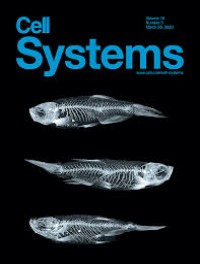Cell Systems Q1 Unclaimed
""""""""Cell Systems was established in 2015 to provide a home at Cell Press for elegant work that addresses fundamental questions in systems biology. """"""""""""""""Systems biology"""""""""""""""" is work that develops a rigorous understanding of any biological phenomenon where one plus one does not apparently equal two. Disciplines in the physical sciences have met this challenge for a long time, and we've found that our strongest papers tend to apply classic approaches taken in physics, engineering, mathematics, and computer science to salient biological questions. """""""" It has an SJR impact factor of 4,943.
Type: Journal
Type of Copyright:
Languages:
Open Access Policy: Open Choice
Type of publications:
Publication frecuency: -
4782 €
Inmediate OA0 €
Embargoed OA0 €
Non OAMetrics
4,943
SJR Impact factor98
H Index107
Total Docs (Last Year)293
Total Docs (3 years)7003
Total Refs2130
Total Cites (3 years)248
Citable Docs (3 years)5.72
Cites/Doc (2 years)65.45
Ref/DocOther journals with similar parameters
Cell Stem Cell Q1
Molecular Cell Q1
Cell Research Q1
Annual Review of Plant Biology Q1
Nature Cell Biology Q1
Compare this journals
Aims and Scope
Best articles by citations
The Molecular Signatures Database Hallmark Gene Set Collection
Juicer Provides a One-Click System for Analyzing Loop-Resolution Hi-C Experiments
A Single-Cell Transcriptomic Map of the Human and Mouse Pancreas Reveals Inter- and Intra-cell Population Structure
Juicebox Provides a Visualization System for Hi-C Contact Maps with Unlimited Zoom
A Single-Cell Transcriptome Atlas of the Human Pancreas
Scrublet: Computational Identification of Cell Doublets in Single-Cell Transcriptomic Data
Plasma Proteome Profiling to Assess Human Health and Disease
DoubletFinder: Doublet Detection in Single-Cell RNA Sequencing Data Using Artificial Nearest Neighbors
Scalable Open Science Approach for Mutation Calling of Tumor Exomes Using Multiple Genomic Pipelines
An Optimized Shotgun Strategy for the Rapid Generation of Comprehensive Human Proteomes
Construction and Analysis of Two Genome-Scale Deletion Libraries for Bacillus subtilis
A Multi-network Approach Identifies Protein-Specific Co-expression in Asymptomatic and Symptomatic Alzheimer’s Disease
Gene Regulatory Network Inference from Single-Cell Data Using Multivariate Information Measures
Efficient Multiplexed Integration of Synergistic Alleles and Metabolic Pathways in Yeasts via CRISPR-Cas
Single-Cell Transcriptomics Reveals that Differentiation and Spatial Signatures Shape Epidermal and Hair Follicle Heterogeneity
Unification of Protein Abundance Datasets Yields a Quantitative Saccharomyces cerevisiae Proteome
Antithetic Integral Feedback Ensures Robust Perfect Adaptation in Noisy Biomolecular Networks
The Library of Integrated Network-Based Cellular Signatures NIH Program: System-Level Cataloging of Human Cells Response to Perturbations
Engineering Modular Viral Scaffolds for Targeted Bacterial Population Editing
MHCflurry: Open-Source Class I MHC Binding Affinity Prediction
Programming a Human Commensal Bacterium, Bacteroides thetaiotaomicron, to Sense and Respond to Stimuli in the Murine Gut Microbiota
Geospatial Resolution of Human and Bacterial Diversity with City-Scale Metagenomics
Ultra-High-Throughput Clinical Proteomics Reveals Classifiers of COVID-19 Infection



Comments